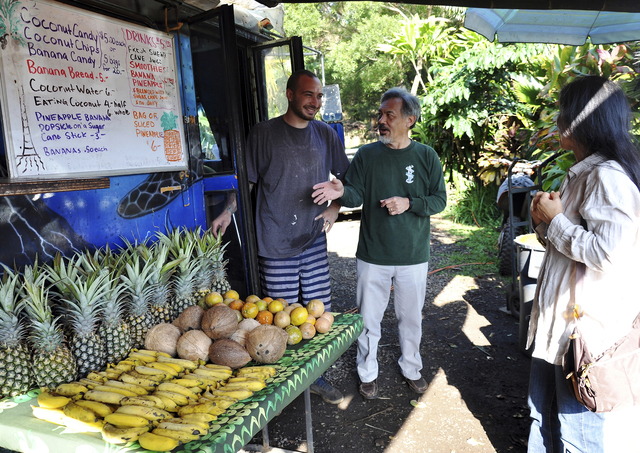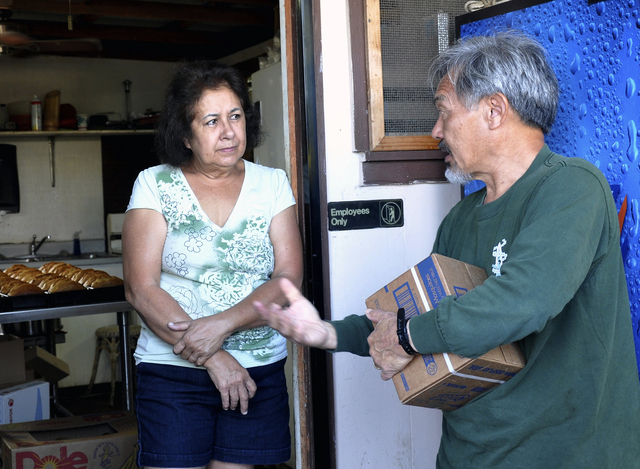HONOLULU — Maui health officials are driving along a scenic coastal highway with a giant water-gun spraying trees and brush with diluted detergent to kill mosquito larvae. ADVERTISING HONOLULU — Maui health officials are driving along a scenic coastal highway
HONOLULU — Maui health officials are driving along a scenic coastal highway with a giant water-gun spraying trees and brush with diluted detergent to kill mosquito larvae.
They’re stepping up the fight against mosquito-borne diseases like the Zika virus, dengue fever and chikungunya, and handing out bug spray along cliff-hugging Hana Highway, a winding narrow road dotted with lush waterfalls and hiking trails popular with tourists.
“Along this corridor we’ve got what, a million people per year, and we’ve got, trust me, 10 times the number of mosquitoes biting them,” said Maui County Health Officer Lorrin Pang.
Public health officials are visiting attractions along Hana Highway such as Twin Falls and a banana bread stand, asking property managers and others to distribute bug spray to guests. Officials distributed bug spray along the same path during Maui’s dengue fever outbreak in 2001, Pang said.
A recent outbreak of dengue fever on Hawaii’s Big Island prompted Maui officials to distribute spray again and take other proactive steps. The Big Island dengue outbreak, which ended in April, sickened more than 260 people.
Pang and others are using water-guns to splash far-flung trees and forest vegetation with watered-down dish detergent, which Pang says is more environmentally friendly than pesticides and kills larvae over the course of a couple hours.
“We have shown in our backyard laboratory the stuff does kill the wigglers,” Pang said. “They kind of don’t like chemicals, they’re organic nature folks, and me too. So a mild soap that degrades in a few hours is right on the money for this.”
There have been no known local transmissions of the diseases on Maui, but officials are getting more calls to investigate potential cases, Pang said.
“Before we were doing four or five investigations a year of imported cases,” Pang said. “Now we look like we’re going to do 40 or 50 a year.”
To respond to the public’s desire for information, Maui officials are tracking disease incidents on a digital map and they’re producing a monthly video on cable television.




